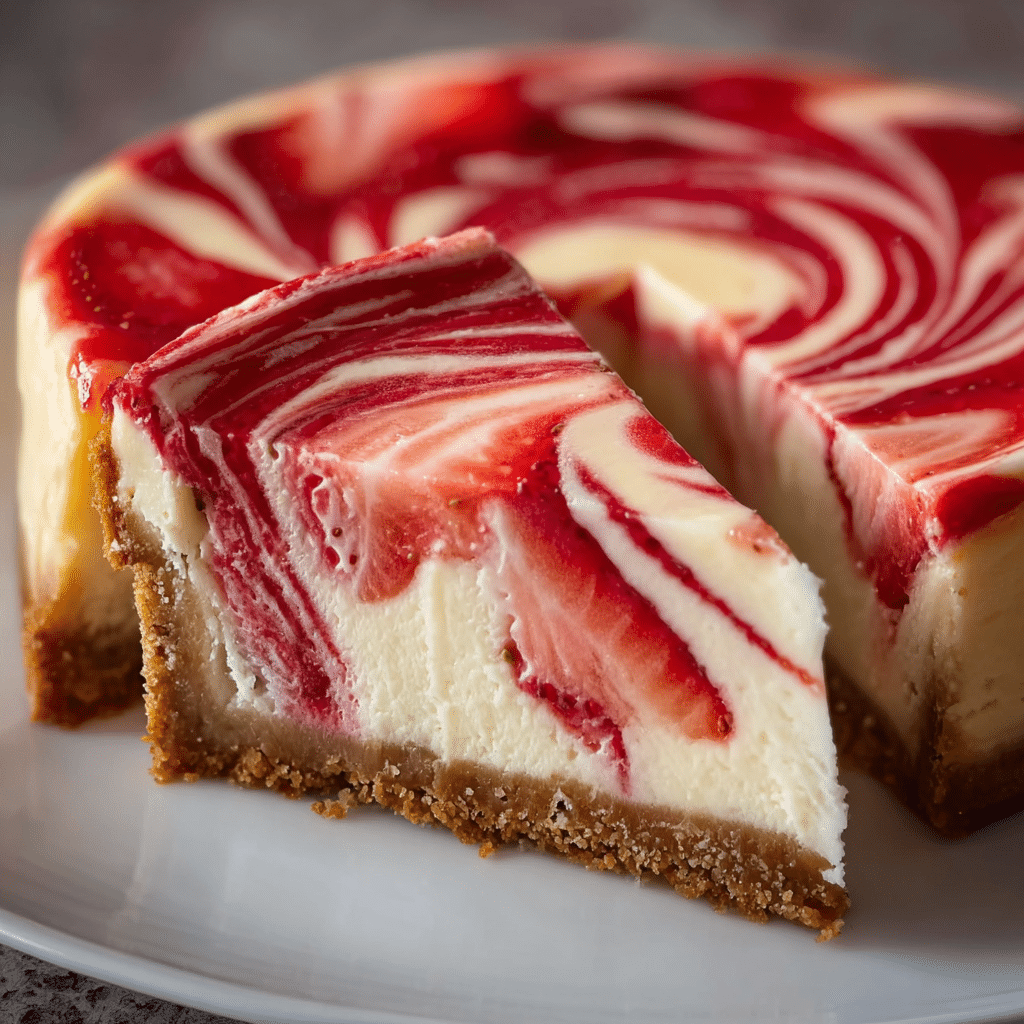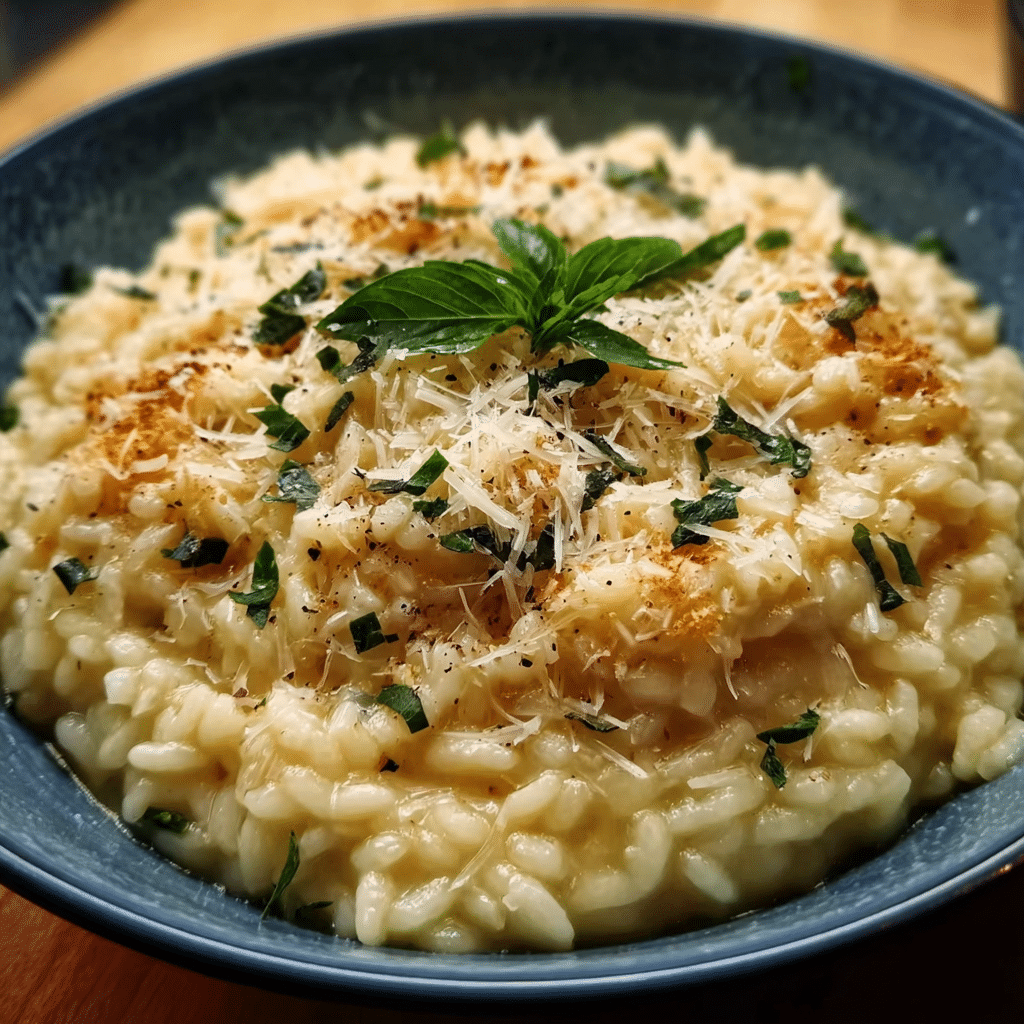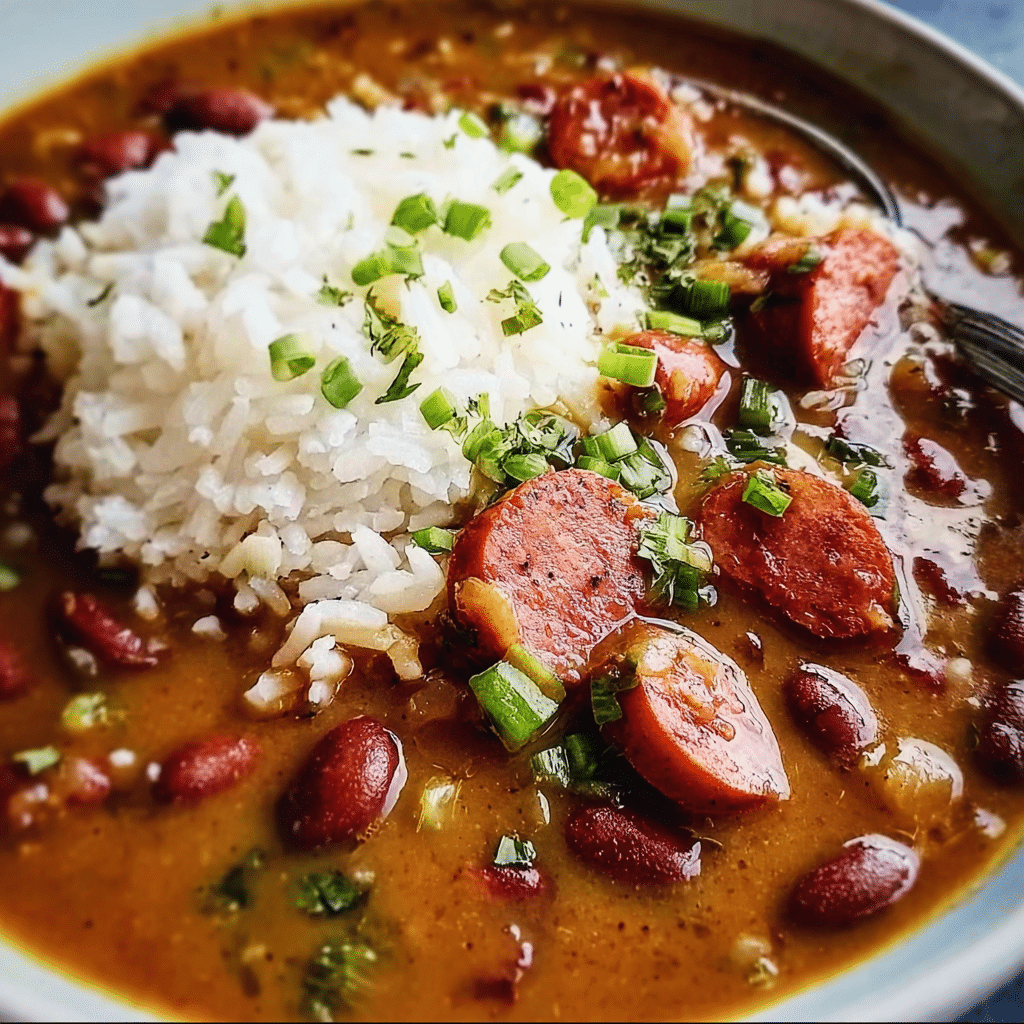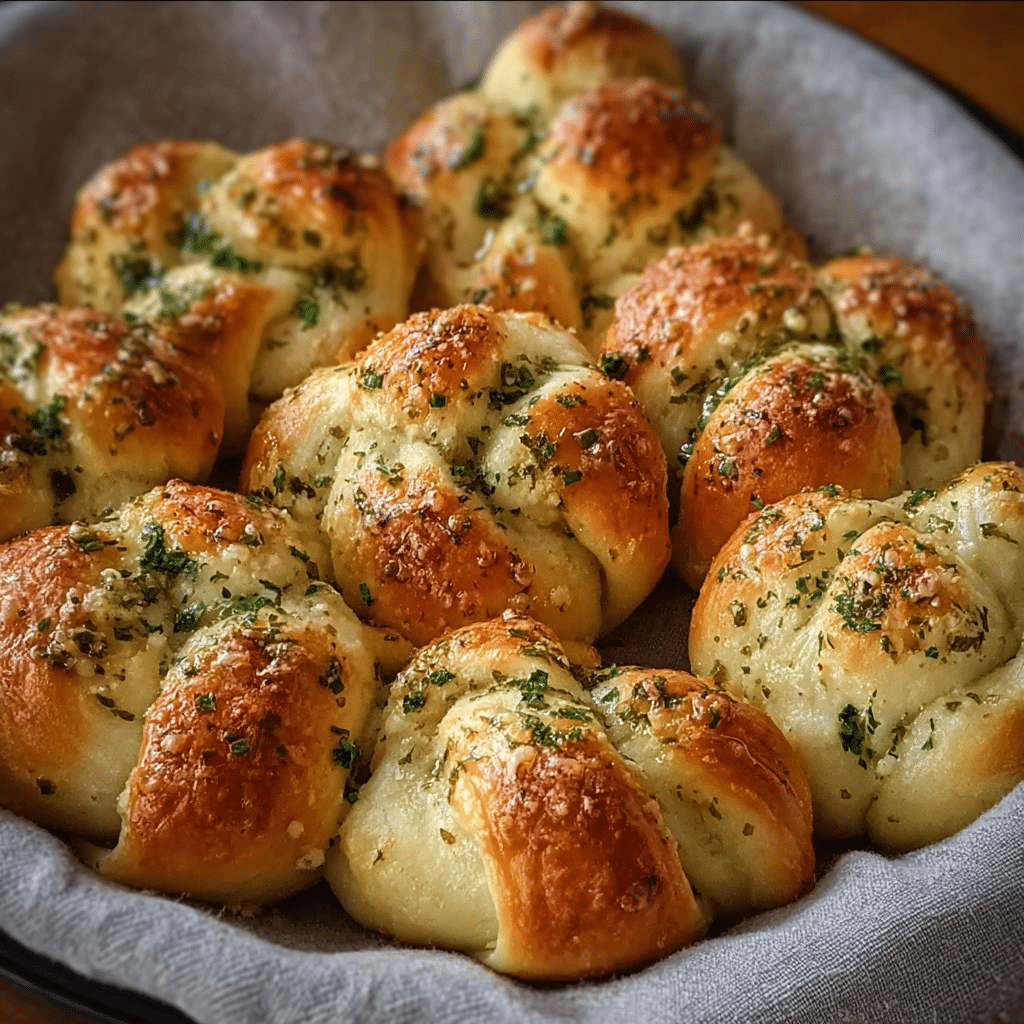Vegan pumpkin pasta is a delightful culinary creation that combines the earthy sweetness of pumpkin with the comforting embrace of pasta. I first stumbled upon this recipe during a cozy autumn evening while visiting a quaint little café in a charming town renowned for its fall festivals. The air was crisp, filled with the scent of fallen leaves and spices, and I was immediately drawn to the vibrant pumpkin dish on their menu. As I took my first bite, I was enchanted not only by the flavors but also by the way the pumpkin transformed the pasta into something truly special. It was a moment of culinary discovery that I couldn’t wait to recreate at home.
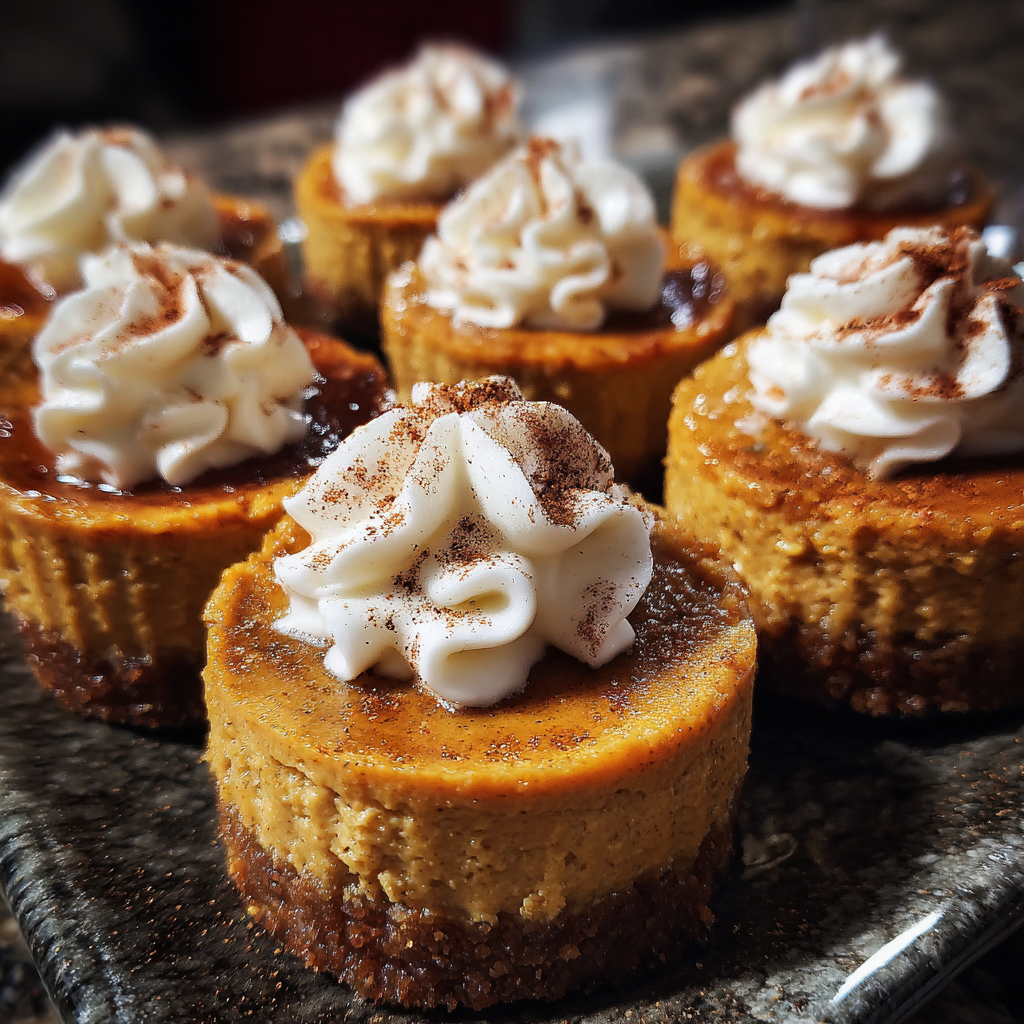
As someone who constantly seeks plant-based recipes that are both nutritious and satisfying, vegan pumpkin pasta captured my heart. The dish is a beautiful representation of how simple ingredients can come together to create something extraordinary. I remember rushing home, eager to experiment with my own version, substituting heavy cream with creamy coconut milk and adding a sprinkle of nutmeg for warmth. The result was a comforting bowl of vegan pumpkin pasta that was not only pleasing to the palate but also to the soul. It quickly became a staple in my kitchen, especially during the fall months when pumpkins are in abundance.
The Story Behind This Recipe
Vegan pumpkin pasta is not just a dish; it’s a celebration of autumn’s bounty. Pumpkins have long been a cherished ingredient in various cuisines worldwide, particularly in North America and Europe. Traditionally, pumpkins were harvested in the fall, making them a seasonal staple in many households. The practice of combining pasta with pumpkin can be traced back to Italy, where the use of squash in pasta dishes is common, especially in the northern regions. The creamy texture and sweet flavor of pumpkin meld beautifully with the pasta, creating a hearty meal that is both comforting and nourishing.
This dish stands out from other pasta recipes for its versatility and adaptability. The base can be modified to include various spices, herbs, and vegetables, making it suitable for diverse taste preferences. For busy families, vegan pumpkin pasta is a godsend. It can be whipped up in under thirty minutes, making it perfect for those hectic weeknight dinners. Just a few ingredients are needed, including pumpkin puree, garlic, and olive oil, which you probably already have in your pantry. This simplicity allows families to spend less time in the kitchen and more time together at the dinner table.
Moreover, the seasonal relevance of vegan pumpkin pasta makes it a dish you’ll want to enjoy throughout the fall. As the days grow shorter and the evenings colder, there’s something incredibly comforting about a warm bowl of pasta infused with the flavors of the season. This dish evokes feelings of nostalgia, reminding me of family gatherings where laughter and stories were shared over hearty meals. Each bite of vegan pumpkin pasta carries with it the warmth of those memories, making it a dish that is not only delicious but also emotionally enriching.
In this guide, you’ll learn everything you need to know about making the perfect vegan pumpkin pasta. From selecting the best pumpkin to tips on achieving that creamy sauce without dairy, I promise to equip you with the skills and knowledge needed to recreate this dish in your own home. You’ll discover variations that cater to different tastes, including additional spices, greens, and toppings that can elevate your pasta to new heights. So, grab your apron and let’s dive into the world of vegan pumpkin pasta, where comfort food meets health-conscious living!
The Rich History and Cultural Significance of vegan pumpkin pasta
The rich history and cultural significance of vegan pumpkin pasta are woven into the fabric of many culinary traditions. This dish, while modern in its vegan interpretation, draws from age-old practices of combining seasonal ingredients with staple foods like pasta. The origins of pumpkin as a culinary ingredient can be traced back to the indigenous peoples of the Americas, who utilized this versatile squash in their diets long before European settlers arrived. Pumpkins were revered not just for their flavor but also for their nutritional value, as they are rich in vitamins A and C, fiber, and antioxidants.
Origins and History
In Italy, the tradition of using squash in pasta dates back centuries. Regions like Emilia-Romagna and Veneto are known for their delicious pumpkin tortellini and ravioli, showcasing the harmonious relationship between pasta and pumpkin. These dishes often feature a filling of roasted pumpkin mixed with spices and cheese, encased in fresh pasta. The transformation of this traditional dish into a vegan version showcases the creativity and adaptability of modern cooking. By replacing cheese with nut-based alternatives or simply relying on the pumpkin’s natural creaminess, home cooks can enjoy the same comforting flavors while adhering to a plant-based lifestyle.
As this dish gained popularity, various adaptations emerged, reflecting local tastes and available ingredients. For example, in some regions, you might find the addition of sage or brown butter, which complements the earthiness of the pumpkin beautifully. Others may incorporate seasonal vegetables like spinach or kale, adding a pop of color and nutrition. This evolution of the dish illustrates how food is a living entity, constantly adapting to cultural shifts and dietary preferences.
Cultural Significance
Vegan pumpkin pasta has become a symbol of fall dining, particularly in Western cultures where pumpkin-flavored foods dominate the autumn landscape. It is often featured at Thanksgiving tables, where families gather to celebrate the harvest and the abundance of the season. While traditional Thanksgiving meals may include turkey and stuffing, a plant-based twist like vegan pumpkin pasta allows everyone to partake in the festivities, regardless of dietary restrictions. It’s a dish that fosters inclusivity and creativity in the kitchen, allowing everyone to enjoy the flavors of the season.
Beyond Thanksgiving, vegan pumpkin pasta is often served at harvest festivals and community gatherings, celebrating the bounty of local farms. The vibrant orange hue of the pasta is reminiscent of autumn leaves, making it a visually stunning centerpiece for any meal. It’s a dish that invites conversation and connection, as families and friends gather around the table to share stories and laughter.
Nutritional Benefits
In addition to its cultural significance, vegan pumpkin pasta boasts numerous nutritional benefits. Pumpkins are low in calories yet high in fiber, making them an excellent choice for those looking to maintain a healthy weight. The fiber content aids digestion and helps keep you feeling full, while the natural sweetness of the pumpkin satisfies cravings without the need for added sugars. Furthermore, pumpkins are an excellent source of beta-carotene, which the body converts into vitamin A, essential for maintaining healthy vision and skin.
By opting for a vegan version of pumpkin pasta, you also avoid the saturated fats found in traditional creamy sauces. Instead, you can create a rich and satisfying sauce using plant-based ingredients like nut milks or blended silken tofu, which are lower in fat and calories. This makes vegan pumpkin pasta not only a delicious choice but a health-conscious one as well, perfect for families looking to nourish their bodies while enjoying a comforting meal.
In conclusion, the journey of vegan pumpkin pasta is a fascinating blend of history, culture, and nutrition. With its roots deeply embedded in traditional cooking practices, this dish has evolved into a modern favorite that embraces the flavors of fall while promoting a healthier lifestyle. Whether you’re serving it at a family gathering or enjoying it on a quiet weeknight, vegan pumpkin pasta is sure to warm your heart and satisfy your taste buds.
Essential Ingredients for Perfect vegan pumpkin pasta
Creating the perfect vegan pumpkin pasta begins with selecting high-quality ingredients that not only enhance the dish’s flavor but also align with your dietary preferences. Below is a complete list of essential ingredients, along with detailed explanations of their roles, how to choose the best options, and tips for substitutions.
Essential Ingredients
- Fresh Pumpkin (2 cups, pureed) – The star of our dish! Look for sugar pumpkins or pie pumpkins, which are sweeter and have a rich flavor. Ensure they are firm and have a smooth skin without blemishes.
- Pasta (8 ounces) – Choose your favorite type, whether it be spaghetti, fettuccine, or even gluten-free pasta. Opt for whole grain or legume-based pasta for added nutrition.
- Olive Oil (2 tablespoons) – Extra virgin olive oil is ideal for its robust flavor and health benefits. Check for a dark bottle to ensure freshness.
- Garlic (4 cloves, minced) – Fresh garlic provides a pungent aroma and flavor, elevating the taste of your vegan pumpkin pasta. Look for firm, unblemished cloves.
- Onion (1 medium, chopped) – A yellow onion adds sweetness and depth to the sauce. Choose one that feels heavy for its size and has a dry, papery skin.
- Vegetable Broth (1 cup) – A flavorful base for the sauce; low-sodium vegetable broth is preferable. Look for brands without added preservatives.
- Nutritional Yeast (1/4 cup) – This vegan staple adds a cheesy flavor and is fortified with B vitamins. Choose a bright yellow version for a fresher taste.
- Salt and Pepper – Essential for seasoning, use kosher salt for cooking and fine sea salt for finishing. Freshly cracked black pepper will enhance the dish’s complexity.
- Fresh Herbs (like sage or thyme, for garnish) – Fresh herbs brighten the dish and add an aromatic quality. Look for vibrant, fragrant leaves.
Each ingredient in this list plays a vital role in creating a balanced and delicious vegan pumpkin pasta. The pumpkin provides creaminess and a subtle sweetness, while the garlic and onions contribute savory notes that deepen the flavor profile. Olive oil not only acts as a cooking medium but also enriches the dish with healthy fats. Nutritional yeast is a fantastic way to incorporate umami, making your pasta taste indulgent without any dairy.
Print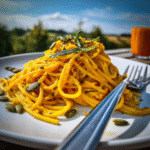
Vegan Pumpkin Pasta Recipe
Ingredients
-
- 1/4 cup olive oil (or oil of choice)
- 1 large yellow onion, diced
- 6 garlic cloves, minced
- 5 large sage leaves, finely chopped
- 1 large sprig, or 2 small sprigs of rosemary, leaves finely chopped (about 1/2 tablespoon of leaves)
- 1 tablespoon fresh thyme leaves, roughly chopped
- 1/4 cup all-purpose flour (see notes for gluten-free option*)
- 1 (13.5-ounce) can “lite” or reduced-fat coconut milk** (or oat milk)
- 1 1/2 teaspoons kosher salt
- Freshly cracked black pepper to taste
- 1/4 teaspoon ground nutmeg
- 1 1/2 cups pumpkin purée (1 15-ounce can has slightly more than 1 1/2 cups)
- 3 1/4 cups vegetable broth (I use low-sodium)
- 1 1/2 tablespoons white or yellow miso paste
- 1/4 cup nutritional yeast
- 8 ounces pasta of choice (I used fettuccine, but see the notes below for other pasta)
- Garnishes: 1/2 cup fresh flat-leaf Italian parsley, vegan parmesan cheese (I love this brand), or Cashew Parmesan (recipe can be found in this blog post)
Instructions
-
Heat a nonstick soup pot or large, deep nonstick skillet**** over medium heat. Add the olive oil and once it’s hot, add the diced onion. Cook for 5-6 minutes until the onion is softened and lightly browned.
-
Add the garlic, and chopped sage/rosemary/thyme leaves. Cook, stirring frequently, for 2 minutes.
-
Reduce the heat to medium-low. Then add the flour, whisking constantly with a wooden spoon for 1 minute until well incorporated and the mixture forms somewhat of a paste. Stream in the lite coconut milk in stages, whisking after each addition to prevent clumps. Then cook for 2 minutes, or until the sauce has thickened.
-
Add the pumpkin purée, kosher salt, black pepper to taste, and the nutmeg, and stir until thoroughly incorporated. Using an immersion blender, blend until the sauce is mostly smooth and creamy.
-
Add the vegetable broth, miso paste, and nutritional yeast and stir to combine. Finally, add the pasta (broken in half if using a long pasta variety), and move the pasta around to submerge it in the liquid.
-
Bring the mixture to a boil, then reduce the heat to maintain a rapid simmer. Once it’s simmering, cook for about 20 minutes, or until the sauce has thickened onto the pasta and the pasta is al dente.
-
Remove from the heat, and taste the pasta for seasonings, adding more salt as needed. Garnish with parsley and vegan parmesan cheese or cashew parmesan.
Shopping Tips
When shopping for ingredients, consider seasonal availability. Fresh pumpkins are typically available in the fall, making this dish perfect for autumnal gatherings. Visit local farmers’ markets for the freshest produce, or look for organic options at your grocery store. Organic ingredients often have better flavor and fewer pesticides, though they can be pricier. If you’re on a budget, consider purchasing conventional produce and washing them thoroughly.
For the pasta, check the ingredient list to avoid any hidden animal products, especially if you’re strictly adhering to a vegan diet. Whole grain and legume-based pastas can often be found at health food stores or online. Buying in bulk can be a cost-effective strategy as well.
Substitutions and Alternatives
For those with dietary restrictions, there are plenty of substitutions to ensure everyone can enjoy this vegan pumpkin pasta. If you’re gluten-free, use gluten-free pasta made from rice, corn, or chickpeas. Alternatively, spiralized vegetables like zucchini or sweet potatoes can provide a low-carb option.
If you have a garlic allergy, try using garlic-infused olive oil instead, which can impart flavor without the actual cloves. For a nut-free version, substitute nutritional yeast with a mix of sunflower seeds and lemon juice to maintain that cheesy flavor. When it comes to herbs, dried herbs can be used in place of fresh ones—just remember to use less, as dried herbs are more concentrated.
Storage tips are also important! Fresh pumpkins can be stored in a cool, dark place for weeks, while pureed pumpkin can be kept in an airtight container in the refrigerator for up to a week or frozen for several months. Pasta should be kept in a cool, dry place, while garlic and onions can last for weeks if stored properly in a dark, dry place away from moisture.
Lastly, don’t forget about cost-saving tips! Many ingredients can be sourced at discount stores, or you can make your own vegetable broth from kitchen scraps. This not only saves money but also reduces waste, making your cooking more sustainable.
From selecting the freshest ingredients to knowing how to store them, every step contributes to the overall success of your vegan pumpkin pasta. Happy cooking!
Detailed Step-by-Step vegan pumpkin pasta Cooking Instructions
Now that you have gathered all the essential ingredients for your vegan pumpkin pasta, it’s time to dive into the cooking process! This section will guide you through each step, ensuring you create a delicious, creamy pasta dish that is both satisfying and healthy. Let’s get started!
Preparation Steps
- Prepare the Pumpkin: If you’re using fresh pumpkin, start by cutting it in half and removing the seeds. You can roast the halves cut side down in a 400°F (200°C) oven for about 30-40 minutes until tender. Once cooked, scoop out the flesh and mash or puree it in a food processor. If you’re using canned pumpkin, ensure it’s 100% pumpkin with no additives.
- Mise en Place: Gather all your ingredients and prepare them before you start cooking. Chop the onions, mince the garlic, and measure out your vegetable broth and nutritional yeast. This organization will streamline your cooking process and help prevent any last-minute scrambling.
- Cook the Pasta: Bring a large pot of salted water to a boil. Add your pasta and cook according to package instructions until al dente. Reserve about a cup of pasta water before draining the pasta; this starchy water will help to bind your sauce later.
Cooking Process
- Sauté the Aromatics: In a large skillet over medium heat, add the olive oil. Once hot, add the chopped onions and sauté for about 3-4 minutes until they become translucent. Add the minced garlic and cook for another 1-2 minutes until fragrant. Be careful not to burn the garlic, as it can turn bitter.
- Add the Pumpkin: Stir in the pumpkin puree, mixing well with the onions and garlic. Let it cook for about 5 minutes to allow the flavors to meld. This step is crucial; it helps to develop a deeper flavor and makes the sauce creamy.
- Incorporate the Broth: Gradually add the vegetable broth to the pumpkin mixture, stirring continuously. Bring the mixture to a gentle simmer. If it looks too thick, you can add more broth or reserved pasta water to reach your desired consistency.
- Season the Sauce: Once the sauce is simmering, stir in the nutritional yeast, salt, and pepper. Taste and adjust the seasoning as needed. This is where you can get creative; feel free to add spices like nutmeg or cinnamon for a warm flavor that complements the pumpkin.
Final Assembly
- Combine the Pasta and Sauce: Add the drained pasta to the skillet with the pumpkin sauce. Toss to combine, ensuring the pasta is well coated. If the sauce is too thick, gradually add more reserved pasta water until the desired creaminess is reached. This is a key step in achieving that perfect texture for your vegan pumpkin pasta.
- Garnish and Serve: Once combined, remove from heat and serve immediately. Garnish with freshly chopped herbs like sage or thyme for an aromatic finish. A sprinkle of extra nutritional yeast can add a cheesy flavor, elevating the dish even further.
- Enjoy Your Creation: Take a moment to appreciate your culinary creation. Serve with a side salad or some crusty bread to make it a complete meal. And don’t forget to enjoy the fruits of your labor—this vegan pumpkin pasta is not only delicious but also a comforting, seasonal dish that will surely impress your friends and family!
Cooking is all about experimentation and learning. Don’t be afraid to make adjustments to the recipe based on your taste preferences or what you have on hand. Remember, the most important ingredient in any dish is love, so pour your heart into your cooking and enjoy the process!
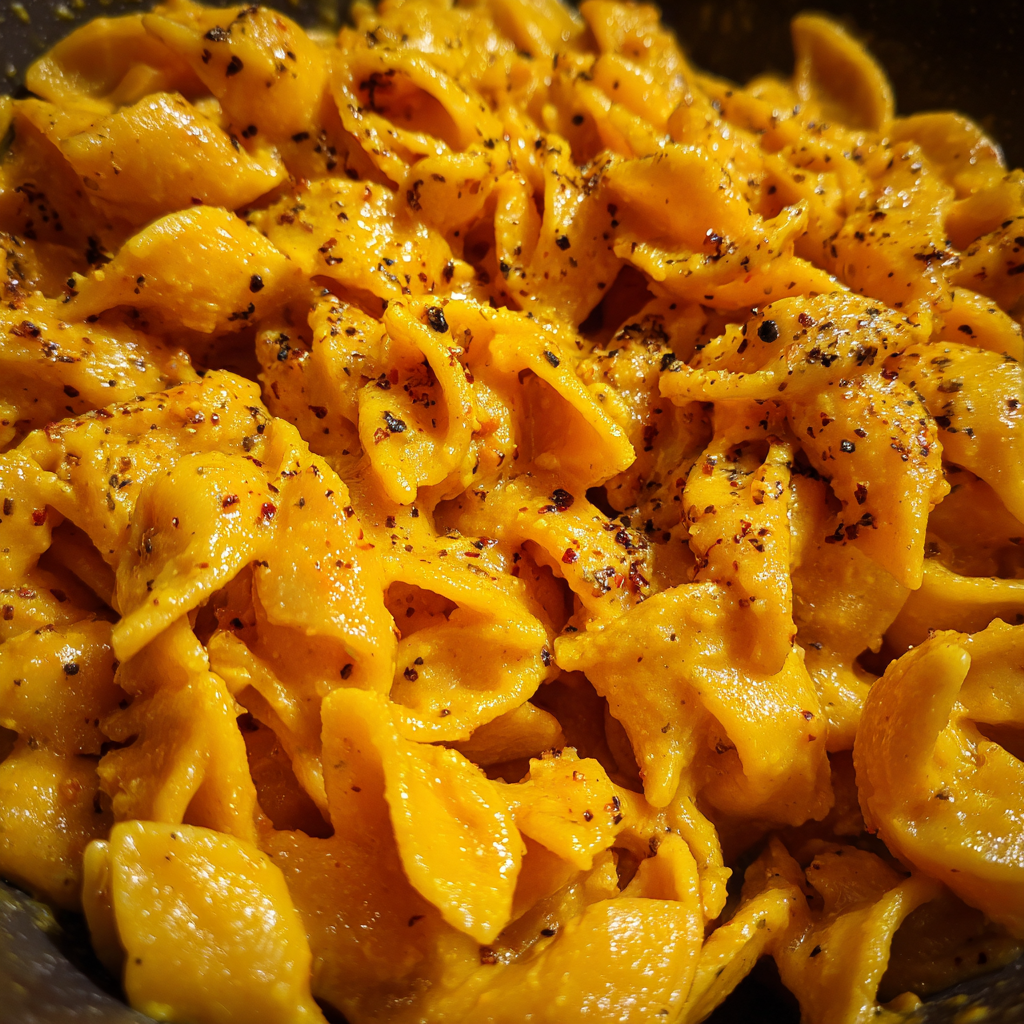
Professional Tips and Techniques for vegan pumpkin pasta
When it comes to crafting the perfect vegan pumpkin pasta, there’s an art and a science to it. A dish that blends the earthy sweetness of pumpkin with al dente pasta can easily become a culinary masterpiece when approached with the right techniques. In this section, we’ll dive into the professional tips and techniques to elevate your vegan pumpkin pasta to new heights, troubleshoot common problems, and explore presentation ideas that will wow your guests.
Professional Techniques
Creating a sumptuous vegan pumpkin pasta begins with understanding a few professional techniques. First and foremost, the choice of pumpkin is crucial. While canned pumpkin puree is convenient, using fresh pumpkin can yield a more vibrant flavor. To prepare fresh pumpkin, select a sugar pumpkin, which is sweeter and less fibrous than the larger pumpkins often used for decoration. Cut it in half, scoop out the seeds, and roast the halves cut-side down on a baking sheet at 400°F (200°C) for about 30-40 minutes or until tender. Once cooled, scoop out the flesh and blend it until smooth.
When making your sauce, consider incorporating aromatics such as garlic and onion. Sauté these in a bit of olive oil before adding the pumpkin puree for depth of flavor. Adding a dash of nutmeg and a pinch of cinnamon not only enhances the pumpkin’s natural sweetness but also adds warmth to the dish. For creaminess, consider adding a splash of coconut milk or cashew cream, which pairs beautifully with the pumpkin.
A key tip for perfect pasta is to ensure it is cooked al dente. This means that the pasta should still have a slight bite to it. To achieve this, follow the package instructions but subtract a minute or two from the cooking time. Remember to reserve some pasta water before draining; this starchy liquid can be added to your sauce to help it adhere to the pasta and create a silky texture.
Troubleshooting Guide
Even the most seasoned cooks encounter challenges. Here are some common issues you might face when preparing vegan pumpkin pasta and how to solve them:
- Too Thick Sauce: If your sauce turns out too thick, simply add a splash of vegetable broth or reserved pasta water to thin it out. This will not only adjust the consistency but also keep the flavor balanced.
- Overcooked Pasta: If you accidentally overcook your pasta, immediately rinse it under cold water to stop the cooking process. While this isn’t ideal, it can salvage your dish.
- Flat Flavor: If your sauce lacks depth, consider adding a splash of balsamic vinegar or a squeeze of lemon juice to brighten the flavors. Fresh herbs like basil or parsley can also elevate the dish.
Presentation Tips
Presentation is key when serving your vegan pumpkin pasta. Start by twirling the pasta onto a fork or tongs for a lovely nest-like appearance on the plate. Use a shallow bowl or a large, flat plate to showcase the dish beautifully. You can garnish with toasted pumpkin seeds for added texture and a pop of color, and a drizzle of high-quality olive oil will give it that finishing touch.
For an extra burst of flavor, sprinkle fresh herbs on top just before serving. A few leaves of fresh basil or a sprinkle of chives can add a lovely contrast to the warm, rich tones of the pumpkin sauce. If you’re feeling adventurous, a few microgreens can also provide a trendy touch.
Wine pairing can enhance the dining experience of your vegan pumpkin pasta. A crisp white wine, such as a Sauvignon Blanc or a lightly oaked Chardonnay, complements the sweetness of the pumpkin beautifully. If you prefer red, go for a light Pinot Noir that won’t overpower the dish.
Lastly, consider meal prep strategies. The sauce can be made in advance and stored in the refrigerator for up to three days, or frozen for up to three months. Cooked pasta also freezes well; just toss it in a bit of olive oil before freezing to prevent sticking. This makes it easy to whip up a quick meal on busy nights!
Creative Variations and Adaptations of vegan pumpkin pasta
The beauty of vegan pumpkin pasta lies in its versatility. With a bit of creativity, you can transform this dish to suit any palate or dietary need. In this section, we’ll explore an array of creative variations and adaptations, seasonal ingredient swaps, and dietary modifications that can breathe new life into your pasta dish.
Seasonal Variations
While pumpkin is the star of the show in the fall, there are plenty of seasonal ingredients that can be swapped in to create delightful variations throughout the year. In spring, consider using fresh asparagus and peas, tossing them into the sauce for a pop of green and sweetness. In summer, zucchini noodles can be a fantastic, low-carb alternative to traditional pasta, lending a refreshing twist to the dish.
In winter, roasted butternut squash can serve as a beautiful substitute for pumpkin, offering a similar sweetness and texture. Just like pumpkin, it can be roasted until tender, pureed, and combined with your favorite pasta. The key is to always consider the ingredients that are in season, as they not only taste better but are often more affordable.
Dietary Adaptations
For those with specific dietary needs, adapting your vegan pumpkin pasta is a breeze. For a gluten-free option, simply swap out traditional pasta for gluten-free varieties made from chickpeas, lentils, or brown rice. These options are not only gluten-free but also packed with protein and fiber.
If you’re looking for a keto-friendly version, you can use spiralized vegetables like zucchini or spaghetti squash as a base. These alternatives drastically reduce the carbohydrate count while still delivering the satisfaction of a hearty meal. Just remember to adjust the sauce seasoning, as these vegetables can be milder in flavor than traditional pasta.
Creative Twists
Now let’s get into the fun stuff—creative twists! One innovative way to elevate your vegan pumpkin pasta is by introducing international flavors. For instance, you could infuse the dish with Indian spices like curry powder and coconut milk for a vibrant, aromatic experience. This fusion creates a unique take on the classic Italian dish, blending cultures in a delicious way.
Another great idea is to add a protein boost with lentils or chickpeas, which can complement the pumpkin sauce beautifully. Simply cook them separately and stir them into the pasta for added texture and nutrition. You can also experiment with a spicy kick by adding red pepper flakes or even a drizzle of sriracha to the sauce.
Leftovers from your vegan pumpkin pasta can also be transformed into a delightful pasta bake. Combine your pasta with a sprinkle of nutritional yeast, top with breadcrumbs, and bake until golden and crispy for a comforting dish that feels entirely new. This not only reduces food waste but also makes for a satisfying meal the next day.
In conclusion, the world of vegan pumpkin pasta is filled with endless possibilities. With a few tweaks and the right ingredients, you can create a dish that suits every occasion and dietary preference. Whether you’re entertaining guests or simply enjoying a quiet night at home, these variations will ensure your pasta dish is always exciting and delicious!
Storage, Reheating, and Meal Prep for vegan pumpkin pasta
When it comes to enjoying your delicious vegan pumpkin pasta, knowing how to store it properly is essential for maintaining its flavor, texture, and nutritional value. Whether you’re preparing a large batch for the week or simply want to save leftovers, understanding the ins and outs of storage can make all the difference.
Short-term Storage
After you’ve whipped up a delightful pot of vegan pumpkin pasta, you might find yourself with some leftovers. Proper short-term storage is crucial to keeping your meal fresh and flavorful. The best method for storing your pasta is to let it cool down to room temperature before placing it in any containers. This prevents condensation from forming, which can lead to a soggy dish.
For refrigerator storage, I recommend using airtight containers. Glass containers are a personal favorite of mine because they don’t retain odors and are microwave-safe. If you opt for plastic, make sure it is BPA-free. The key is to store the pasta separately from the sauce if possible; this helps preserve the pasta’s texture. If the sauce is already mixed in, don’t worry—just be sure to consume it within three to five days for optimal freshness.
Label your containers with the date you prepared the meal, and you’ll have an easy reference for when to eat it. I often enjoy having a meal prep day where I cook a few different dishes and store them in the fridge, making weeknight dinners a breeze.
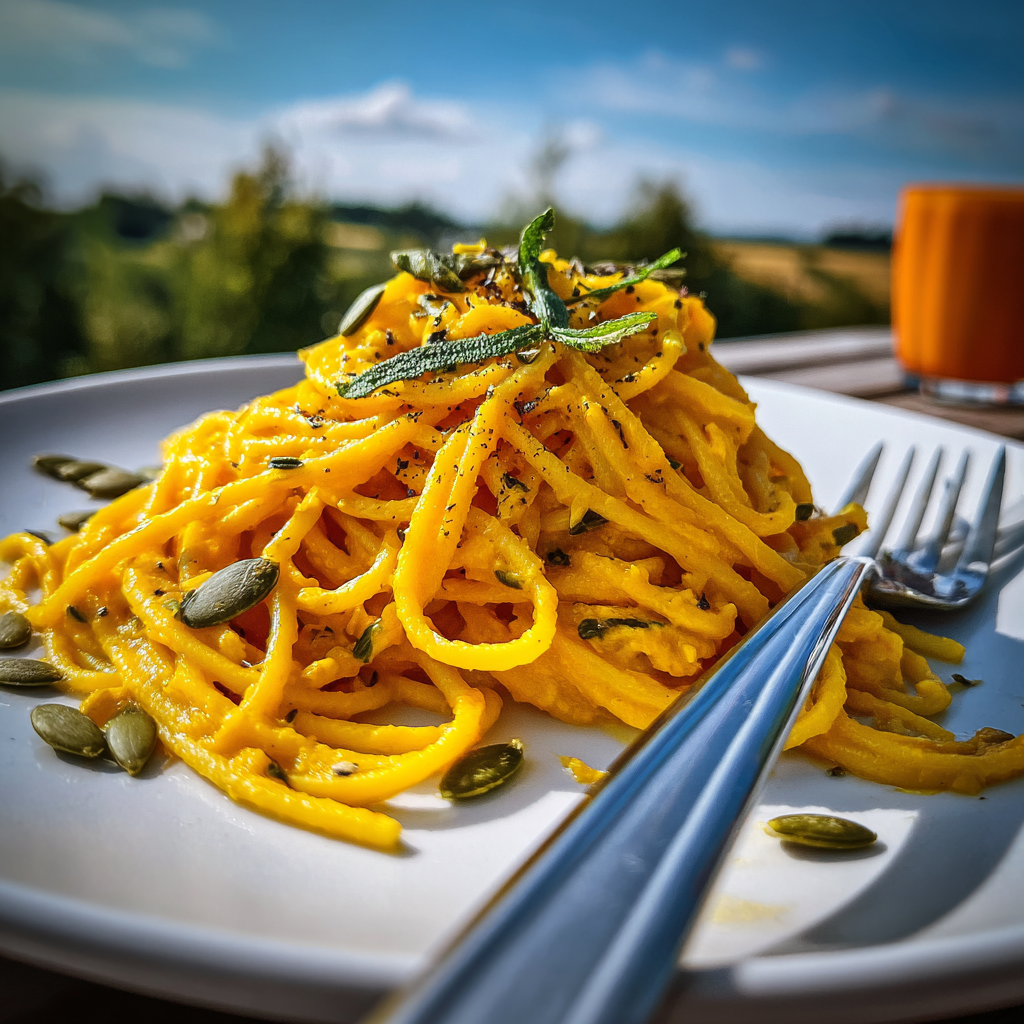
Freezing and Long-term Storage
If you’ve made a large batch of vegan pumpkin pasta and want to save some for later, freezing is an excellent option. Freezing not only preserves the dish for future meals but also allows for more flexibility in your meal planning. To freeze effectively, let the pasta cool down completely before transferring it to freezer-safe containers or resealable plastic freezer bags.
When using bags, try to remove as much air as possible before sealing—this helps prevent freezer burn. A tip I learned from a friend is to lay the bags flat in the freezer so they take up less space and freeze more evenly. You can stack them once they’re solid. The pasta can typically be frozen for up to three months without significant loss of quality, but I find it’s best to enjoy it within one to two months for optimal flavor.
When it comes to the sauce, you can freeze it separately as well. This is particularly useful if you want to switch up your pasta next time or if you’re making multiple types of sauces for variety. Just remember to label everything with the contents and date!
Reheating Best Practices
Reheating your vegan pumpkin pasta correctly is crucial to enjoying it the way it was intended. One method I love is to gently reheat it on the stove. Start by adding a splash of water or vegetable broth to the pan to prevent sticking and promote even heating. Stir occasionally until the pasta is heated through. This method helps retain the creamy texture of the sauce.
If you’re short on time, a microwave can do the job efficiently. Place your pasta in a microwave-safe dish, add a little moisture, cover it with a microwave-safe lid or plate, and heat in short intervals, stirring in between. This ensures that the pasta warms evenly and doesn’t dry out.
Regardless of the method you choose, be mindful not to overheat it. Overcooking can lead to mushy pasta and an unappetizing texture. I usually prefer the stovetop method because it allows me to control the heat better, but both methods work beautifully.
Lastly, always consider food safety. If your vegan pumpkin pasta has been sitting in the fridge for more than five days, it’s best to err on the side of caution and discard it. Also, when reheating, ensure that the dish is heated to at least 165°F (74°C) to kill any potential bacteria.
By following these storage, freezing, and reheating tips, you can enjoy your vegan pumpkin pasta over several days while maintaining its delicious flavor and quality. Whether it’s a quick weekday dinner or a comforting weekend meal, knowing how to manage your leftovers will make your culinary experience even more enjoyable.
Nutritional Benefits and Health Information
When it comes to crafting a delicious plate of vegan pumpkin pasta, you’re not just creating a meal; you’re also embracing a wealth of nutritional benefits. This dish is not only satisfying to the palate but is also packed with essential nutrients that support overall health. Let’s dive into the details of its nutritional profile, health benefits, and dietary considerations.
Nutritional Profile
The base of any vegan pumpkin pasta recipe often includes whole wheat or gluten-free pasta, which contributes to its carbohydrate content. A typical serving (about 2 ounces dry pasta) can provide around 200 calories, 7 grams of protein, and 1-2 grams of fat, depending on the type of pasta used. The addition of pumpkin puree, which is a star ingredient, not only adds flavor but also enhances the nutritional profile significantly.
Pumpkin is low in calories, with just about 50 calories per cup of pureed pumpkin, and it is high in fiber, which aids digestion and promotes satiety. Additionally, it provides a good dose of vitamins A and C, potassium, and iron. The creamy sauce often made from cashews or other plant-based ingredients adds healthy fats and protein, rounding out the dish’s macronutrient content.
Health Benefits
The health benefits of vegan pumpkin pasta are vast. The pumpkin itself is a powerhouse of nutrients. For instance, its high vitamin A content comes from beta-carotene, which supports eye health and boosts the immune system. Furthermore, the antioxidants found in pumpkin can help fight inflammation and reduce the risk of chronic diseases.
Many people also turn to plant-based diets for weight management, and meals like this can play a significant role. The fiber content from both the pasta and pumpkin contributes to a feeling of fullness, which can help control appetite and reduce overall caloric intake. Plus, with a lower fat content compared to traditional creamy pasta dishes, it’s a heart-healthy option that doesn’t skimp on flavor.
Dietary Considerations
In terms of dietary considerations, vegan pumpkin pasta is incredibly versatile. It’s suitable for various dietary restrictions, including vegan, vegetarian, and gluten-free diets (when using gluten-free pasta). However, it’s essential to consider potential allergens. For those with nut allergies, making the sauce with alternatives to nuts—like sunflower seeds or using a simple vegetable broth with spices—can ensure that everyone can enjoy this dish.
In terms of calorie content and macronutrient distribution, this meal can easily fit into a variety of diet plans, including those focused on weight loss, muscle building, or simply maintaining a balanced diet. It’s also a wonderful option for those looking to increase their vegetable intake without feeling deprived.
For healthy modifications, consider adding sautéed vegetables like spinach, kale, or roasted red peppers to your vegan pumpkin pasta. This not only enhances the flavor but also boosts the nutritional content. For an extra protein punch, you can toss in some chickpeas or lentils, making your meal even more satisfying.
In comparison to similar dishes like traditional creamy pasta or pumpkin ravioli, vegan pumpkin pasta stands out as a healthier alternative. While traditional recipes may use heavy creams and cheeses, this vegan version relies on the natural creaminess of pumpkin and nut-based sauces, making it lighter on the stomach while still being rich in flavor.
In conclusion, vegan pumpkin pasta is a delightful dish that offers a myriad of nutritional benefits. With its rich flavors and comforting textures, it’s a perfect choice for any meal, whether it’s a quick weeknight dinner or a special gathering. Embrace its versatility, enjoy its health benefits, and savor every delicious bite!
Frequently Asked Questions About Vegan Pumpkin Pasta
Vegan pumpkin pasta no cream
If you’re looking to make vegan pumpkin pasta without using cream, you can achieve a rich and creamy texture by blending cooked pumpkin with vegetable broth and nutritional yeast. This mixture not only adds creaminess but also infuses the dish with a cheesy flavor. To enhance the taste, consider adding garlic, onion, or your favorite herbs, such as sage or thyme, during the cooking process. You can also incorporate sautéed spinach or kale for added nutrition and color. Serve it over your choice of pasta for a delicious, creamy dish without any dairy.
Vegan pumpkin pasta bake
To create a comforting vegan pumpkin pasta bake, start by cooking your pasta until al dente. Combine it with a mixture of pureed pumpkin, vegetable broth, and seasonings like garlic powder, nutmeg, and black pepper. Transfer this mixture to a baking dish and top it with breadcrumbs or a sprinkle of vegan cheese for a crispy finish. Bake in the oven at 350°F (175°C) for about 20-25 minutes until heated through and golden on top. This baked dish is perfect for meal prep and can be stored in the fridge for quick lunches throughout the week.
Creamy vegan pumpkin pasta
For a deliciously creamy vegan pumpkin pasta, you can blend cooked pumpkin with soaked cashews, garlic, and a splash of plant-based milk. This creamy sauce can then be tossed with your choice of pasta and seasoned with spices like cinnamon or nutmeg to enhance the pumpkin flavor. To elevate the dish, consider adding sautéed mushrooms or spinach for extra texture and nutrients. Drizzle with a bit of olive oil before serving and garnish with fresh herbs like parsley or basil for a vibrant touch. This recipe not only satisfies your creamy cravings but also keeps it entirely plant-based!
Vegan pumpkin pasta healthy
Vegan pumpkin pasta can be a healthy meal option when made with wholesome ingredients. Start with whole grain or legume-based pasta for added fiber and protein. Incorporating pumpkin not only provides a creamy texture but also boosts the dish’s nutritional profile with vitamins A and C. You can add plenty of vegetables, such as spinach, kale, or bell peppers, to increase the nutrient density. To keep the dish light, use minimal oil and season with fresh herbs and spices instead of heavy sauces, making it both satisfying and nutritious.

